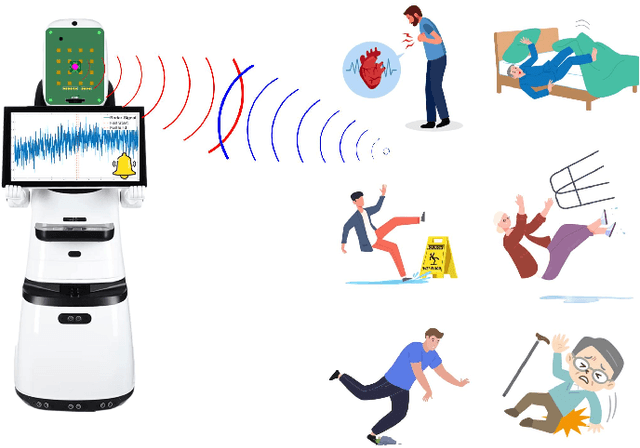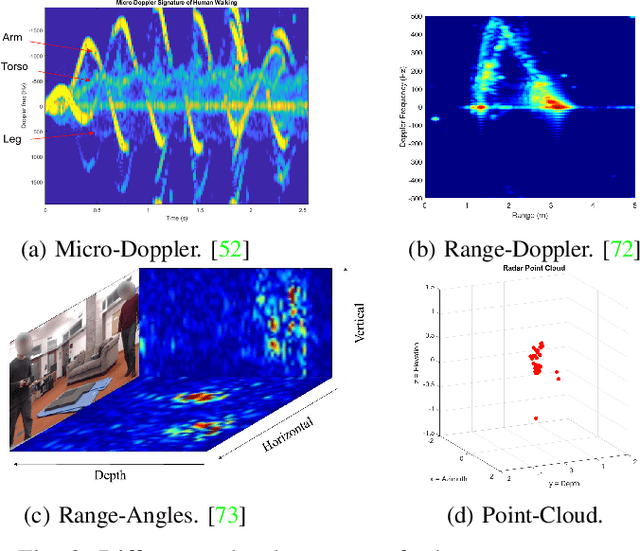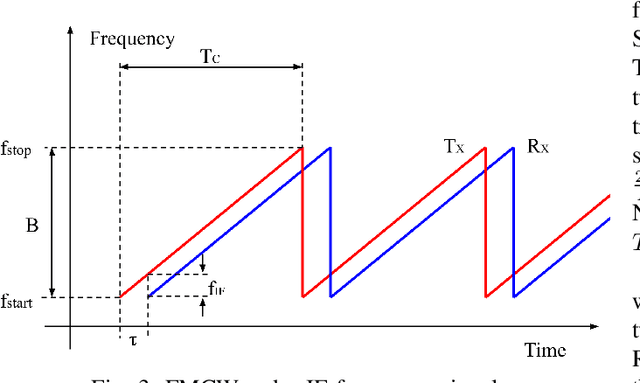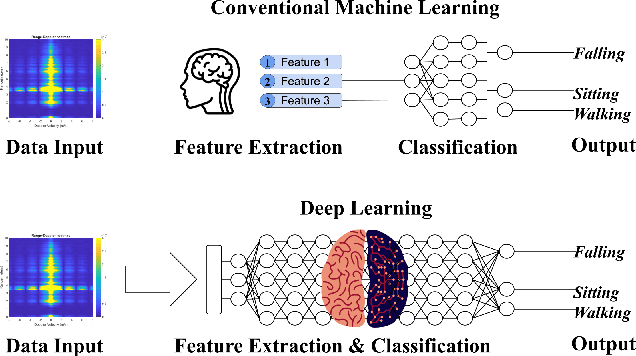Nima Toosizadeh
mmWave Radar for Sit-to-Stand Analysis: A Comparative Study with Wearables and Kinect
Nov 22, 2024Abstract:This study explores a novel approach for analyzing Sit-to-Stand (STS) movements using millimeter-wave (mmWave) radar technology. The goal is to develop a non-contact sensing, privacy-preserving, and all-day operational method for healthcare applications, including fall risk assessment. We used a 60GHz mmWave radar system to collect radar point cloud data, capturing STS motions from 45 participants. By employing a deep learning pose estimation model, we learned the human skeleton from Kinect built-in body tracking and applied Inverse Kinematics (IK) to calculate joint angles, segment STS motions, and extract commonly used features in fall risk assessment. Radar extracted features were then compared with those obtained from Kinect and wearable sensors. The results demonstrated the effectiveness of mmWave radar in capturing general motion patterns and large joint movements (e.g., trunk). Additionally, the study highlights the advantages and disadvantages of individual sensors and suggests the potential of integrated sensor technologies to improve the accuracy and reliability of motion analysis in clinical and biomedical research settings.
A Survey on Radar-Based Fall Detection
Dec 07, 2023



Abstract:Fall detection, particularly critical for high-risk demographics like the elderly, is a key public health concern where timely detection can greatly minimize harm. With the advancements in radio frequency technology, radar has emerged as a powerful tool for human detection and tracking. Traditional machine learning algorithms, such as Support Vector Machines (SVM) and k-Nearest Neighbors (kNN), have shown promising outcomes. However, deep learning approaches, notably Convolutional Neural Networks (CNN) and Recurrent Neural Networks (RNN), have outperformed in learning intricate features and managing large, unstructured datasets. This survey offers an in-depth analysis of radar-based fall detection, with emphasis on Micro-Doppler, Range-Doppler, and Range-Doppler-Angles techniques. We discuss the intricacies and challenges in fall detection and emphasize the necessity for a clear definition of falls and appropriate detection criteria, informed by diverse influencing factors. We present an overview of radar signal processing principles and the underlying technology of radar-based fall detection, providing an accessible insight into machine learning and deep learning algorithms. After examining 74 research articles on radar-based fall detection published since 2000, we aim to bridge current research gaps and underscore the potential future research strategies, emphasizing the real-world applications possibility and the unexplored potential of deep learning in improving radar-based fall detection.
Cerebrovascular morphology in aging and disease -- imaging biomarkers for ischemic stroke and Alzheimers disease
Feb 14, 2022Abstract:Background and Purpose: Altered brain vasculature is a key phenomenon in several neurologic disorders. This paper presents a quantitative assessment of vascular morphology in healthy and diseased adults including changes during aging and the anatomical variations in the Circle of Willis (CoW). Methods: We used our automatic method to segment and extract novel geometric features of the cerebral vasculature from MRA scans of 175 healthy subjects, 45 AIS, and 50 AD patients after spatial registration. This is followed by quantification and statistical analysis of vascular alterations in acute ischemic stroke (AIS) and Alzheimer's disease (AD), the biggest cerebrovascular and neurodegenerative disorders. Results: We determined that the CoW is fully formed in only 35 percent of healthy adults and found significantly increased tortuosity and fractality, with increasing age and with disease -- both AIS and AD. We also found significantly decreased vessel length, volume and number of branches in AIS patients. Lastly, we found that AD cerebral vessels exhibited significantly smaller diameter and more complex branching patterns, compared to age-matched healthy adults. These changes were significantly heightened with progression of AD from early onset to moderate-severe dementia. Conclusion: Altered vessel geometry in AIS patients shows that there is pathological morphology coupled with stroke. In AD due to pathological alterations in the endothelium or amyloid depositions leading to neuronal damage and hypoperfusion, vessel geometry is significantly altered even in mild or early dementia. The specific geometric features and quantitative comparisons demonstrate potential for using vascular morphology as a non-invasive imaging biomarker for neurologic disorders.
 Add to Chrome
Add to Chrome Add to Firefox
Add to Firefox Add to Edge
Add to Edge